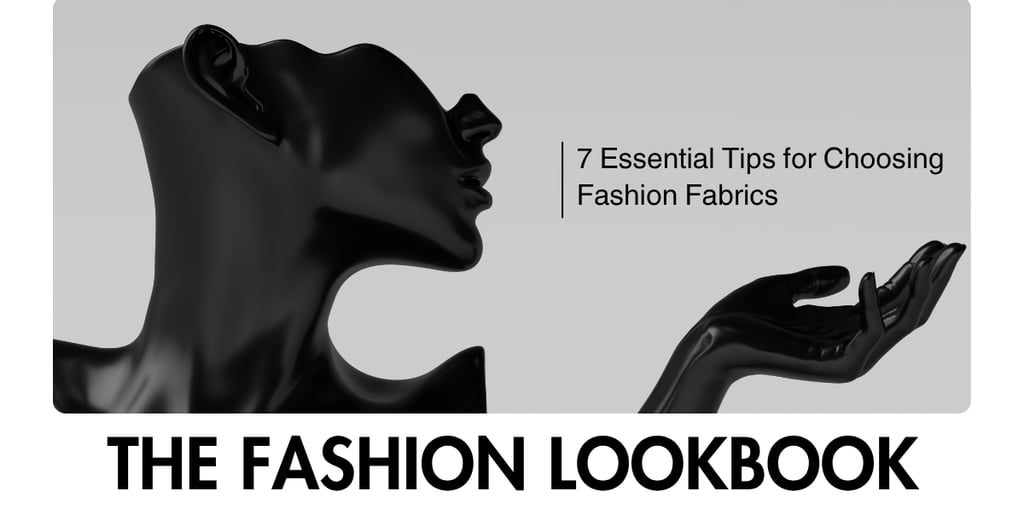7 Essential Tips for Choosing Fashion Fabrics
Learn how to choose the right fashion fabrics. Discover fabric types, textures, and expert tips to make your clothes stylish, durable, and comfortable.
FASHION
Asad Ali
10/23/20253 min read


Introduction
When it comes to fashion, fabric is everything. The right fabric can make an outfit look elegant, last longer, and feel comfortable — while the wrong one can ruin even the most stylish design. Whether you’re a designer, a fashion student, or someone who loves creating unique looks, understanding how to choose the right fabric is a must.
In this article, we’ll explore 7 essential tips for choosing fashion fabrics, helping you make smarter decisions the next time you shop for clothes or design your own outfit.
1. Understand the Purpose of Your Garment
Before selecting any fabric, think about what the garment is for.
Are you making casual wear, office outfits, or evening gowns? Each purpose requires a different fabric. For example:
Cotton is ideal for everyday wear — breathable and easy to care for.
Silk works best for luxury or evening wear.
Linen is perfect for summer clothing because it’s light and airy.
Wool keeps you warm in winter and is great for coats or suits.
Understanding the function helps you choose a fabric that not only looks good but also performs well.
2. Know the Fabric Types and Textures
Fashion fabrics come in various types — natural, synthetic, and blended. Each has its advantages and limitations.
Natural fabrics like cotton, silk, wool, and linen are breathable and comfortable but may need extra care.
Synthetic fabrics such as polyester, rayon, or nylon are durable, wrinkle-resistant, and often more affordable.
Blended fabrics combine both qualities — for example, cotton-polyester mixes comfort with durability.
Texture also plays a big role in how a garment drapes or fits. Smooth fabrics like satin feel luxurious, while textured fabrics like tweed add structure and style.
Choosing the right type ensures your clothing matches the design and function perfectly.
3. Always Check Fabric Weight and Drape
The weight and drape of a fabric determine how it moves and falls on the body.
For instance:
Lightweight fabrics (like chiffon or georgette) are flowy and best for dresses or blouses.
Medium-weight fabrics (like cotton or denim) suit everyday wear.
Heavy fabrics (like wool or canvas) are more structured and suitable for outerwear.
When you choose a fabric, hold it in your hand, let it hang, and observe how it falls. A fabric with a soft drape gives a feminine look, while a stiff one creates bold and tailored silhouettes.
4. Consider the Season and Climate
Fashion changes with seasons, and so should your fabric choices.
In summer, go for breathable, moisture-wicking materials like cotton, linen, or rayon.
In winter, focus on warmth — wool, velvet, fleece, and corduroy are ideal.
For transitional weather, fabrics like denim, jersey, or polyester blends offer comfort and flexibility.
Climate plays a huge role in fashion design, and choosing the wrong fabric for the season can make an outfit uncomfortable, no matter how beautiful it looks.
5. Pay Attention to Color and Pattern
Color is one of the most powerful elements in fashion. When selecting fabrics, always check how colors appear under different lights — daylight and indoor lighting can change their look.
Patterns also affect the overall appeal. Large prints work well for simple designs, while smaller patterns are better for fitted garments.
If you’re into fashion trends, 2025 is seeing a rise in earthy tones, floral prints, and monochrome styles. But remember, choose what complements your skin tone and personality — timeless style always outlasts short-term trends.
6. Check Fabric Durability and Maintenance
Before buying a fabric, ask yourself: Will this last long?
Durability depends on the fiber strength and weave density. For example:
Denim and twill fabrics are tough and long-lasting.
Silk and organza are delicate and need special care.
Also, consider how easy it is to wash or iron the material. If you want something low-maintenance, polyester blends are practical. But for luxury fashion pieces, delicate fabrics are worth the effort.
Good fabric maintenance can extend the life of your wardrobe and keep it looking new for years.
7. Feel the Fabric Before You Buy
The best way to choose a fabric is to touch it. Feel its softness, stretch, and texture. The comfort of a fabric can’t always be judged visually — your hands will tell you whether it’s breathable, rough, or too thick. Designers and stylists often say that fabric is like the foundation of fashion — if it feels good, it will look good. If you’re shopping online, always check the material composition and reviews. Many fashion brands now provide detailed descriptions and care instructions for transparency.
Bonus Tip: Experiment and Learn
Fashion is an art — don’t be afraid to experiment. Try mixing different fabrics like lace with denim, or leather with silk. Combining textures can create unique, trendy looks that stand out.
Over time, as you handle more fabrics, you’ll start developing an instinct for what works best for each design.
Conclusion
Fabric is the heart of fashion. The right material not only enhances your design but also defines its comfort, shape, and durability. By following these 7 essential tips for choosing fashion fabrics, you’ll make smarter, more sustainable, and stylish choices.
Remember, every great outfit starts with great fabric. So the next time you plan to design, shop, or refresh your wardrobe, take a moment to touch, feel, and understand the fabric first — it’s the real secret behind timeless fashion.
